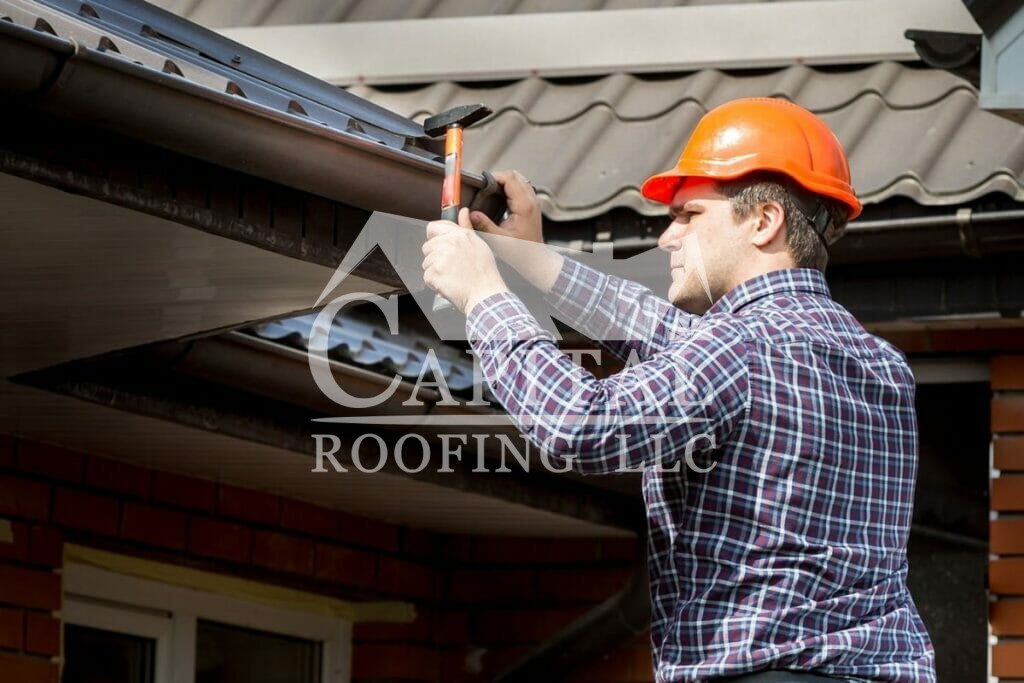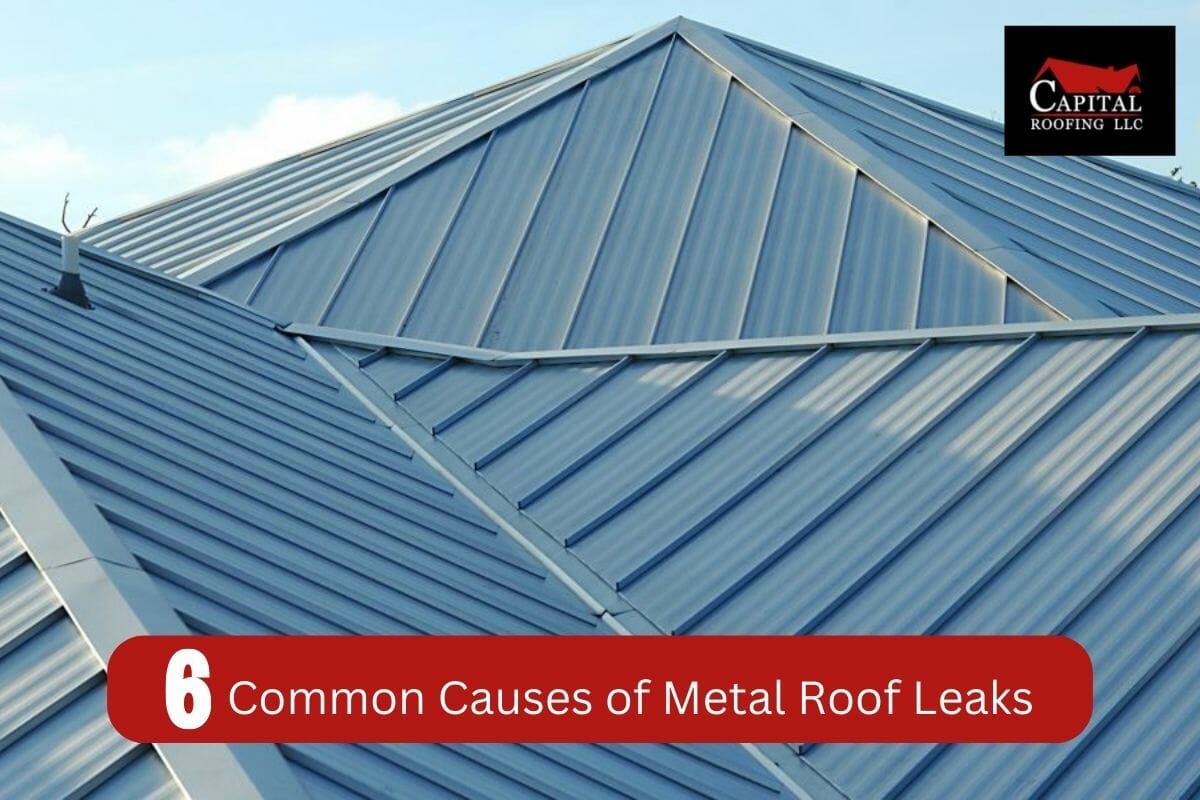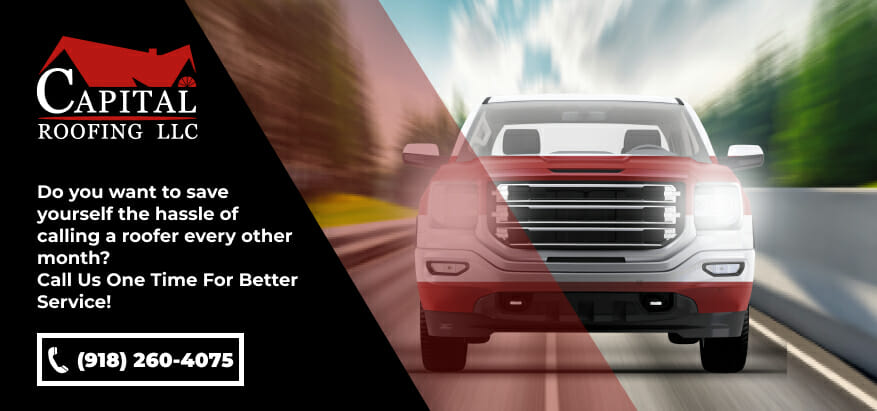Does your home have a metal roof installed? If you do, you’ve chosen a good roofing material as metal roofs are known for their durability and longevity. But there is one thing you need to know too. Even the most well-installed roofs can develop certain issues over time, leaks being one of them.
Understanding the common causes of why metal roof leaks and knowing how to repair them is essential for homeowners and building owners alike. In this article, we will explore the six most common reasons for a leaking metal roof and provide practical solutions for metal roof leak repair.
By addressing these issues promptly, you can ensure the continued protection of your property and avoid costly damage.

1. Your Roof Is Not Installed Correctly
Are you wondering what is among the leading causes of metal roof leaks? Well, it’s a roof that is not installed properly in the first place. When a metal roof is installed correctly, it can be the best roofing system that will stay with you for years to come. But when it isn’t, issues will start to crop up.
Unlike traditional asphalt shingle roofs, metal roofs require specific expertise and techniques to ensure a watertight seal. Therefore, it cannot be emphasized enough how crucial it is to hire a professional installer for your metal roof. While it may be tempting to cut costs and hire an inexpensive roofer, it will not be worth it in the long run if your roof gives you trouble and constantly leaks.
The expertise and experience of a trained installer are essential for ensuring a leak-free and long-lasting roof. Remember, a properly installed metal roof by a professional greatly reduces the likelihood of leaks and maximizes the longevity of your roof.
What Can You Do?
If you suspect that your metal roof was improperly installed, it’s important to consult with a professional. You can contact the team at Capital Roofing. Our team can assess the installation and identify any areas that require attention. In some cases, minor repairs may suffice, but in more severe cases, a complete roof replacement may be necessary.
Read More Here: How To Recognize A Bad Roofing Job
2. Vulnerable Metal Flashing
Roof flashing may be just a small part of your metal roofing system, but it plays a big role in the well-being of your roof. Usually made of metal or rubber, flashing effectively prevents water from seeping into vulnerable areas of the roof, such as chimneys, vents, and skylights.
But there’s a problem, your roof flashing can also suffer damage and therefore not work as effectively.
- Over time, the caulk or sealant used to secure the flashing may deteriorate, therefore making it possible for your roof to leak.
- Additionally, extreme weather conditions and thermal expansion and contraction can cause the flashing to become loose or damaged, compromising its effectiveness.
What Can You Do?
Regularly inspecting and maintaining the flashings on your metal roof is crucial for preventing metal roof leak repair. If you notice signs of deterioration or damage, such as cracked or peeling caulk, it’s important to replace the flashing promptly.
Hiring a professional roofer with experience in metal roof repairs will ensure that the flashing is installed correctly and provides a reliable barrier against water infiltration.
3. The Type of Fasteners On Your Roof
The quality of your metal roof is determined by the quality of its fasteners. Roof fasteners are types of nails or screws used to attach the metal roofing panels to the roof deck If your roof has an exposed fastening system, which is commonly found in certain types of metal roofs (corrugated metal) then the roof is more susceptible to leaks.
Since the fasteners are on the roof’s surface they may become loose or corroded over time. This can create gaps and openings for water to infiltrate. Improperly driven screws installed at the wrong angle during installation are also a common cause of metal roof leak repair as they can compromise the integrity of the fastener system,
What Can You Do?
Upgrading to a standing seam metal roof, where the fasteners are hidden beneath the overlapping panels, is an obvious solution to reduce the risk of leaks. But if you are not looking to upgrade right now, consider this:
- If you have an exposed fastener system, regular inspections and maintenance are crucial. Check that the screws are not loose, corroded, or installed incorrectly.
- Replace any loose or damaged fasteners promptly, and ensure that they are properly sealed to prevent water infiltration.
4. Sealant Issues
At the time of installing your metal roof, you might have heard of roof sealants. Sealants play a crucial role in maintaining the watertight integrity of a metal roof. However, when sealants deteriorate or fail, they can become a significant cause of leaks.
Over time, sealants can degrade due to exposure to sunlight, temperature fluctuations, and other environmental factors. This degradation can result in cracks, shrinkage, or loss of adhesion.
What Can You Do?
Understand the fact that while a metal roof can last for more than 50 years in normal circumstances, the sealant will not. You need to regularly check the areas where the sealant is applied. Also, remember the following:
- Make sure that you or the roofing contractor uses quality sealant made specifically for metal roofing systems/metal panels.
- Use proper, silicone roof sealants/caulking for the best results.
5. Clogged Gutters
Clogged gutters and poor drainage can often be overlooked as potential causes of metal roof leaks. However, they play a significant role in the overall health of your roof.
When gutters become clogged with debris such as leaves, twigs, or sediment, water accumulates and fails to flow freely through the system. This can result in water backing up onto the roof, seeping under the metal panels, and causing leaks. Inadequate drainage, whether due to improper slopes or blockages, compounds the problem by trapping water on the roof’s surface, increasing the likelihood of leaks and water damage.
What Can You Do?
Keep an eye out for overflowing gutters, water spilling over the sides, or pooling near the foundation of your home. These are all signs of a clogged gutter system.
To tackle these issues, a thorough cleaning and maintenance routine for your gutters is necessary. Clean them using a normal washer at least once a week.
6. Aging And Weathering Issues
While it is true that metal roofs are renowned for their longevity, it is important to acknowledge that aging and weathering can still pose issues over time. As metal roofs age and endure the relentless forces of nature, they become increasingly vulnerable to developing leaks.
Over time, metal roofs are subjected to a variety of environmental factors, such as UV radiation, temperature fluctuations, wind, rain, and snow. These elements gradually take their toll, leading to the deterioration of the roof’s protective layers. Due to this, the risk of water penetration and subsequent leaks increases.
What Can You Do?
Roof inspections are the key here. By proactively addressing the effects of aging and weathering on metal roofs, you can extend their longevity. You can also make use of roof coatings as it can reduce the chance of you needing metal roof leak repair.
Learn More: Do Metal Roofs Leak More Than Shingles?
Contact Us Today
If you are experiencing leaks and need assistance with metal roof leak repair, don’t hesitate to contact the expert team of Capital Roofing. We are here to provide you with reliable solutions and exceptional service when it comes to improving the quality of your metal roof. We offer the best roof leak repair services in Claremore and the surrounding areas.
Contact us today at (918) 260-4075 to learn about other metal roofing services that we offer.

